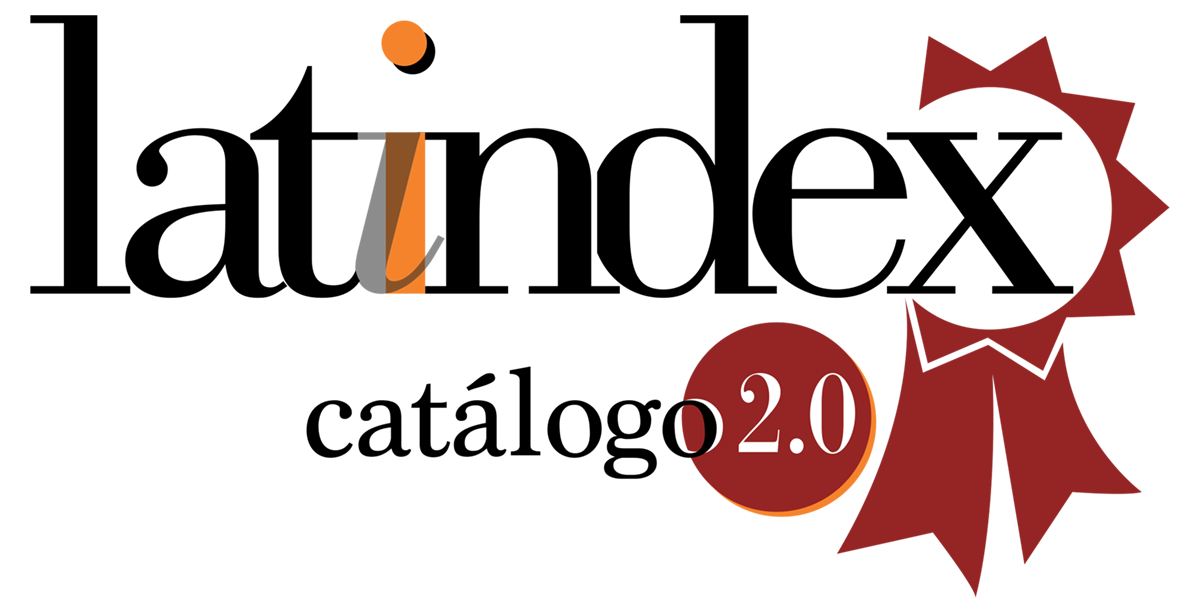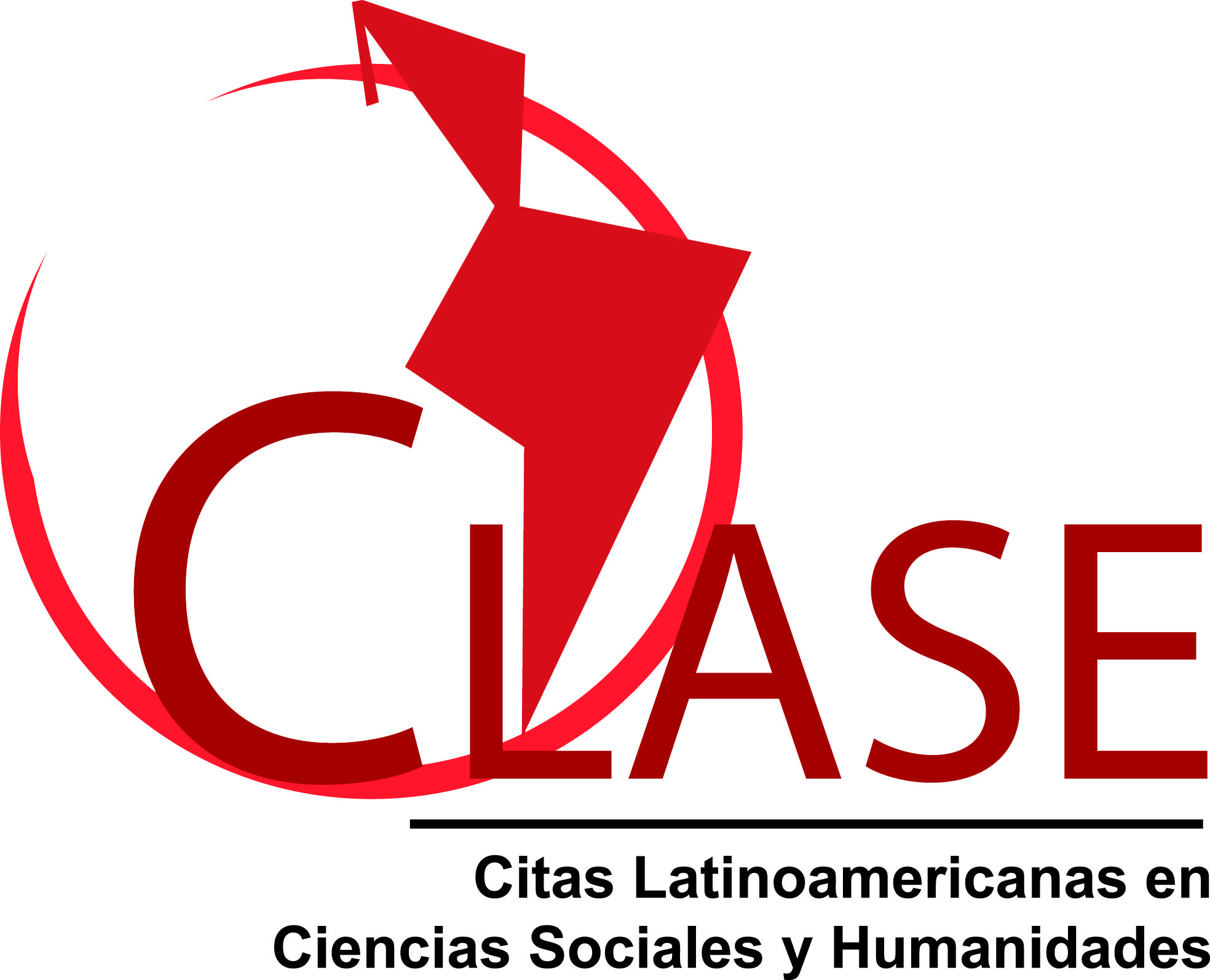Author guidelines
JOURNAL DYCSVICTORIA is a biannual publication (January-June, July-December) that aims to disseminate scientific research in the fields of Law and Social Sciences. It is intended for an academic audience, particularly researchers who wish to share their most significant findings. The journal also seeks to contribute to the strengthening of the scientific community and the dissemination of knowledge to enhance societal well-being.
We publish original scientific articles and reviews in Spanish or English from researchers affiliated with educational institutions or national and international research centers. The journal follows an open-access electronic format. Journal DYCS Victoria is edited and funded by the Universidad Autónoma de Tamaulipas.
To register as an author or reviewer, please request a username and password to access the platform by sending an email to: revistadycs@uat.edu.mx
GENERAL PUBLICATION GUIDELINES / CHECKLIST FOR SUBMISSION PREPARATION
1.The submitted paper must be related to Law and Social Sciences, be original and unpublished, and must not be under review by another publisher at the time of submission. The author assumes full responsibility for any claims regarding authorship. A Letter of Originality must be downloaded and completed.
2. The paper must be scientifically accurate, written with clarity, conciseness, and objectivity
3. The document should be submitted in Microsoft Word format, using Arial, 12-point font, with 1.5 line spacing. Whenever possible, include the URL addresses for references.
4. Italics should be used instead of underlining for Latin phrases or words in languages other than Spanish.
5. In-text citations and reference formatting should follow the APA (Seventh Edition) style.
6. Figures and tables should be submitted separately in PNG format or in their original file format. They should also be embedded in the appropriate locations within the text rather than at the end of the document. The source of each figure must be clearly cited.
7. The opinions expressed in the articles are the sole responsibility of the authors and do not reflect the views of the Editor or the Journal.
8. The text should comply with the style and bibliographic criteria outlined in the Author Guidelines section.
ACCEPTABLE PAPERS
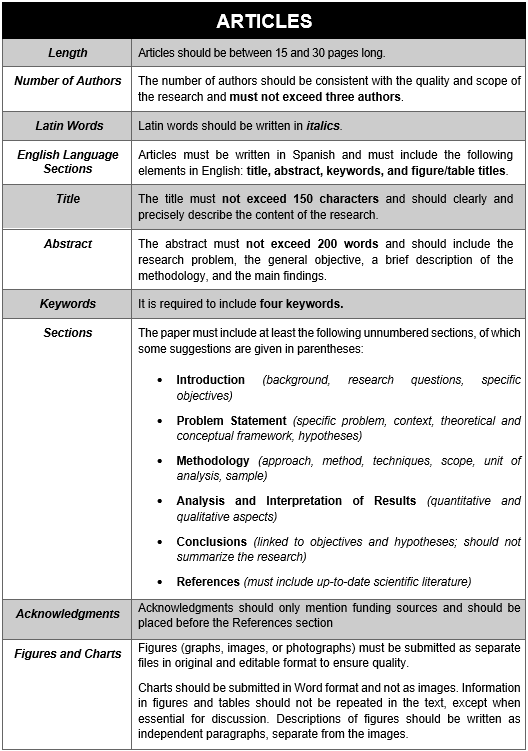
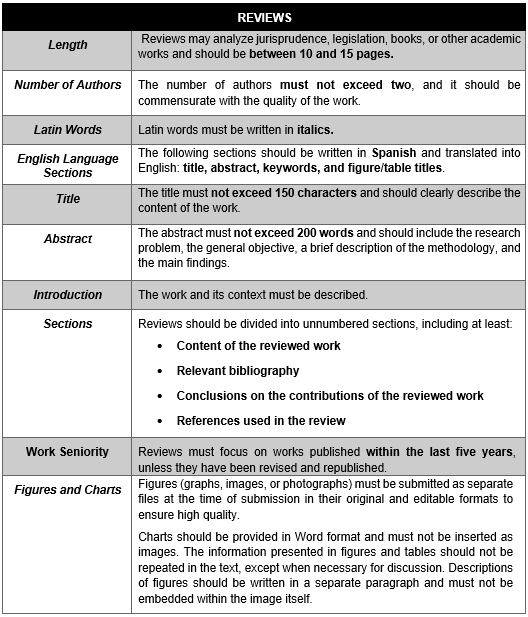
CITATIONS AND REFERENCES
Citations (in-text) and references (at the end) must follow APA (Seventh Edition, 2019) guidelines, which can be downloaded from the following website/ URL: https://www.revista.unam.mx/wp-content/uploads/3_Normas-APA-7-ed-2019-11-6.pdf.
- Citations: In-text citations: Footnotes are not allowed.
- References: All sources cited in the text must appear in the reference section, listed in alphabetical order.
STAGES OF THE EDITORIAL PROCESS ON THE PLATFORM
Submitted papers undergo a multi-stage editorial process. During this process, authors must diligently address all recommendations made in the preliminary review by the Editorial Coordination, as well as in the double-blind review conducted by external experts in the field. In cases of divergent opinions, the Journal Editor will decide whether to send the manuscript to a third reviewer, accept it, or reject it.
- Pre-submission Requirements
The editorial process begins with the CALL FOR PAPERS issued by the Journal Editor.
To access the platform and upload their manuscript, the corresponding author must first obtain login credentials, which are provided by the journal's technical support team upon request via email at revistadycs@uat.edu.mx.
Upon request, the corresponding author will receive registration details for the journal platform. Authors must submit a Word file specifying the personal and institutional information of each co-author, listed in order of contribution.
From the next stage onward, the author will communicate through discussions within the journal's platform, and the updated status of their submission will be automatically notified via email.
- Submission
In the first stage, the manuscript undergoes a preliminary review by the Editorial Coordination team to ensure it meets the thematic requirements outlined in the Call for Papers. Additionally, the manuscript will be screened for plagiarism using the iThenticate verification service and checked against the “submission preparation checklist”.
Note: Manuscripts that do not comply with the journal's editorial standards will be returned to the authors for revision. Authors will have three to five working days to make corrections, which must be highlighted in yellow.
- Peer Review
In the second stage, the Journal Editor will send the submission for evaluation to external researchers working in the respective thematic area, using a double-blind review system. The invitation to review must be answered within five business days; otherwise, the Editorial Coordination will seek another researcher, granting the same period to receive a response.
Once the reviewer pair confirms their participation, they will have up to fifteen business days to complete the evaluation on the Journal’s platform using the Review Form for articles and reviews. In case of conflicting opinions, the Journal Editor will decide whether to send the submission to a third reviewer, or whether to accept or reject it.
If the reviewers provide recommendations for the submission, the author(s) must address them within ten business days, highlighting the changes in yellow.
If a reviewer requested that the submission be sent back to validate the changes, they will have five business days to review the revised version and confirm their approval once notified that it is available on the platform; otherwise, their acceptance will be assumed implicitly, and the submission will proceed to the next stage of the process.
In the event that a reviewer expresses disagreement with the changes, the Journal Editor will decide whether the recommendations have been sufficiently addressed or if the document needs to be returned to the author(s) for further revisions, in which case they will have three business days to complete this task. If the author(s) choose not to make additional changes, the final decision regarding the publication of the submission will rest with the Journal Editor.
- Editorial Proofreading
In the third stage, the accepted article undergoes proofreading to ensure linguistic accuracy. Additionally, the English translations of the title, abstract, keywords, figures, and tables will be reviewed and refined if necessary.
- Production
In the fourth stage, the article will enter the design and layout phase. The author will receive the galley proofs to verify and confirm details such as the author’s name(s), institutional affiliation, zip code, city, and other relevant information before approving the final publication.
The author will have three working days to provide approval. If no response is received within this period, approval will be assumed by default.
- Publication
In the fifth and final stage, upon completion of the editorial process on the platform, the article will be published in the corresponding volume and issue of the edition associated with the current Call for Papers.
GLOSSARY OF ABBREVIATIONS
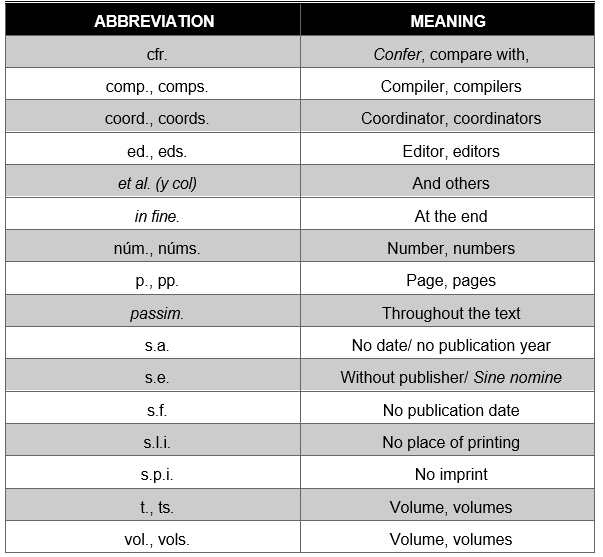
The word véase should be used instead of the Latin abbreviation vid.
*Note: Although some Latin abbreviations such as *et al.*, *passim*, and *in fine* are still used in academic writing, authors are encouraged to prioritize clarity by using their plain English equivalents whenever appropriate


